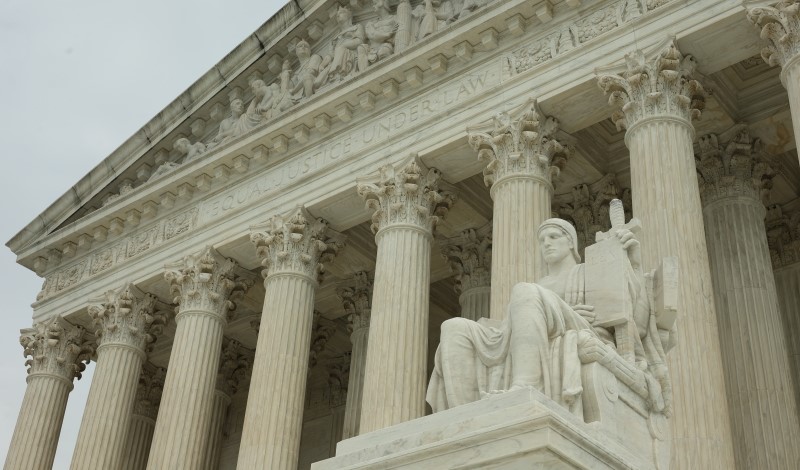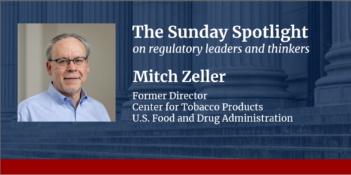
Loper Bright significantly expands the power of the Supreme Court at the expense of democratic institutions of government.
The U.S. Supreme Court’s decision in Loper Bright Enterprises v. Raimondo, which overruled the 40-year-old Chevron v. Natural Resources Defense Council, will not affect Americans’ lives in as stark and immediate a way as the 2022 decision overruling Roe v. Wade.
But like Dobbs v. Jackson Women’s Health Organization, Loper Bright has the potential to fundamentally transform major aspects of the health, safety, and well-being of most Americans. That potential is especially true when it is viewed alongside some of the other major cases about agency power the Court has handed down in recent terms—and indeed in recent weeks—that have stripped agencies of power and shifted that power directly to federal courts.
In this term alone, the Court eliminated a key mechanism used by the U.S. Securities and Exchange Commission (SEC) to enforce securities laws and enjoined an important Environmental Protection Agency emissions standard based on, in the words of Justice Amy Coney Barrett in dissent, an “underdeveloped theory that is unlikely to succeed on the merits.”
Out of the 1984 Chevron decision came the doctrine of Chevron deference. In essence, Chevron deference allowed agencies to use their expertise to determine how to carry out laws passed by the U.S. Congress—laws intended to keep our air and water clean, our drugs safe and effective, and our securities markets protected from fraud and deception.
The Supreme Court has now decreed that it, rather than agencies staffed by individuals with deep subject matter expertise and answerable to presidential appointees, will be the final arbiter of the meaning of every statute passed by Congress.
What does it mean to require agencies to take the “best” or “appropriate” or “feasible” steps to reduce air and water pollution or to keep workplaces safe? While Chevron directed courts to defer to agencies when they brought their expertise to bear on such questions and produced reasonable answers, the Court will now decide for itself.
It will do so not armed with decades of experience administering particular laws passed by Congress but with a wooden, formalistic, and acontextual approach to reading statutory text—informed by dictionaries and the common law and Latin phrases but not the on-the-ground reality of the problems Congress seeks to address in the statutes it passes.
An error in one of this term’s opinions provided a stark illustration of the costs of the Court’s lack of expertise: In the case dealing with the Environmental Protection Agency—Ohio v. EPA—the released version of the majority opinion made five references to “nitrous oxide,” commonly referred to as laughing gas, rather than the “nitrogen oxide” compounds at issue. The error was quickly fixed, but no agency official working on the regulation of this compound would have made such an error—and in many ways that is Chevron’s whole point.
In a world without Chevron, the Court will rely not on expertise but on whatever tools catch its fancy or whatever sources of evidence appear in amicus briefs filed by ideological fellow travelers. That is no exaggeration: It happened in June, when the Court relied on six diagrams and a GIF from the brief of the Firearms Policy Coalition to declare that bump stocks, which functionally convert semiautomatic rifles into machine guns, could not be banned by the Bureau of Alcohol, Tobacco, Firearms and Explosives under a statute banning machine guns.
Although they involve very different subjects, Loper Bright and Dobbs have a great deal in common. They grow out of the same ideological project of conservative legal transformation and reflect similar hubris, recklessness, and retrograde constitutional vision. And they both involve overturning precedents and shifting the law in undemocratic directions while perversely claiming the mantle of democracy.
In countenancing this sort of upheaval, both decisions display outright contempt for the decisions reached by earlier Supreme Courts. The Dobbs Court’s disdain for the authors of Roe v. Wade was palpable: The Court described Roe as involving an “abuse of judicial authority,” referred to its “faulty historical analysis” and called it “egregiously wrong from the start.”
Similarly, in Loper Bright, Chief Justice John Roberts suggested that the unanimous 1984 Chevron opinion “gravely erred,” turned “the statutory scheme for judicial review of agency action upside down” and was always “unworkable.” For good measure, the opinion claimed that the Court’s subsequent modifications to the original Chevron opinion transformed “the original two-step into a dizzying breakdance.”
Dobbs and Loper Bright are also linked by their defensive insistence that democracy demands the results they reach. The Dobbs Court explained that in overruling Roe, it was merely returning “the issue of abortion to the people’s elected representatives.” But it purported to return the question to the democratic process at the precise moment that the Court itself has blessed a variety of antidemocratic techniques. And the method Dobbs announced for identifying constitutional rights—a method that hews closely to “history and tradition”—links rights today to a past in which many Americans were barred from participating in the creation of law.
Loper Bright is similarly antidemocratic while claiming democratic warrant. Its core premise is one of judicial primacy—in the Court’s words, “agencies have no special competence in resolving statutory ambiguities. Courts do.” But the Court also suggests that overruling Chevron honors Congress as a democratically accountable policymaker. In the Court’s telling, its role, under both the U.S. Constitution and the 1946 Administrative Procedure Act, is to independently interpret statutes, which allows the Court to “effectuate the will of Congress.”
This reasoning echoes Justice Neil Gorsuch in an earlier case invalidating a COVID-19-era test-or-vaccine mandate for large employers, issued by the Occupational Safety and Health Administration. Justice Gorsuch in that case invoked democracy even more explicitly, explaining that the Court was merely ensuring “that the national government’s power to make the laws that govern us remains where Article I of the Constitution says it belongs—with the people’s elected representatives.” The Court, Justice Gorsuch insisted, would act to “prevent ‘government by bureaucracy supplanting government by the people.’”
As this quote makes clear, the Court is arguing that it is undemocratic for agencies to take the lead in interpreting statutes passed by Congress, and that it is somehow more democratic for courts to do so. But the Court has it precisely backward. A key premise of Chevron is that it is far more democratic for agencies than for courts to construe ambiguous provisions in the statutes Congress enacts. In the words of Chevron itself, reprised by Justice Elena Kagan’s dissent in Loper Bright, “While agencies are not directly accountable to the people, the Chief Executive is.” Agencies are best situated to resolve “the competing interests which Congress itself either inadvertently did not resolve” or intentionally left to be resolved by the relevant agency. As the Chevron Court continued, “Federal judges—who have no constituency—have a duty to respect legitimate policy choices made by those who do.”
Loper Bright shifts enormous power to courts and does not conceal that: The opinion itself is a paean to judicial power. But the Court’s reasoning also seems to be traversing still more dangerous terrain. Its minimization of the democratic legitimacy of agencies and its valorization of itself and a select few other institutions as the true sites of democracy have shades of the populist rhetoric of former President Donald J. Trump.
Contrast this with the Court’s deep skepticism of other sources of governmental power. Those include agencies such as the Bureau of Alcohol, Tobacco, Firearms and Explosives, which, by the Court’s account, banned bump stocks only under “tremendous political pressure” and while repudiating the agency’s “previous guidance”; prosecutors, such as those who used a federal anticorruption statute against a former Indiana mayor in Snyder v. United States—a case about the sweep of a federal law aimed at public corruption; state supreme courts, such as the Colorado Supreme Court that ruled that President Trump could not appear on the state’s ballot after having engaged in insurrection; and administrative law judges at the SEC—Justice Gorsuch said that “the title ‘judge’ in this context is not quite what it might seem.”
In disparaging all of these exercises of government power, Loper Bright moves a key project of this Supreme Court—the expansion of the power of the Court and its corollary, the disempowerment of other entities—forward significantly.
In arrogating to itself enormous new authority, the Court ensures that it alone will continue to make the most important decisions in our national life. And that is no way to run a democracy.
This essay is part of a series, titled The Supreme Court’s 2023-2024 Regulatory Term.
This essay is an edited version of commentary first published in the New York Times on June 29, 2024.




